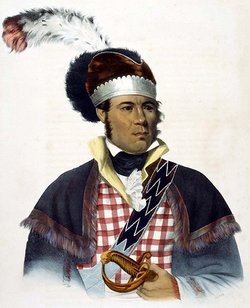Bio by: Iola
Family Members
-
![]()
Jane Ahkohkee McIntosh Hawkins-Carr
1801 – unknown
-
![]()
COL William Chillicothe "Chilly" McIntosh
1804–1875
-
![]()
Catherine "Kate" McIntosh Cousins
1809–1849
-
![]()
Rebecca McIntosh Hagerty
1815–1888
-
![]()
Delilah McIntosh Drew
1818–1885
-
Hettie Catherine McIntosh Willison
1820–1887
-
Sarah "Sallie" McIntosh McLish
1820–1903
-
![]()
Col Daniel Newnan "Noonin" McIntosh
1822–1895
Advertisement















